Not every beginning sewing master knows what interlining is. All information about the material, its types, as well as step-by-step instructions for use are detailed in this article.
- Production of adhesive interlining
- What is fabric interlining, what is it for and how does it differ from other types?
- Types of material
- How to choose a dublerin
- How to use adhesive interlining
- How interlining is attached to the base fabric
- Preparing equipment
- Gluing parts together
- How to care for items with interlining
- Advantages and disadvantages of dublerin
Production of adhesive interlining
Interlining is a high-quality interlining material. It is manufactured using a new production technology that involves the principle of a strong connection of two different layers. On one side of the interlining is fabric, and on the other is an adhesive base.
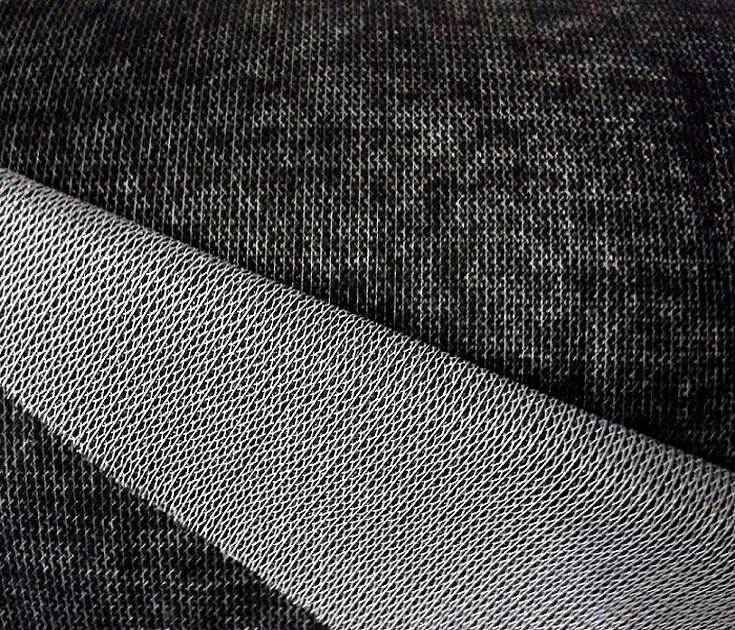
For your information! There are many queries on the Internet about how to spell it correctly: dublirin or dublerin. So the correct option is the second one. The word written with "I" is considered a gross mistake.
The type of fabric varies. It can be thin gauze or fairly dense fabric.

The adhesive component is made from:
- polyamide;
- ethylene vinyl acetate;
- polyethylene.
Each adhesive layer is applied using a powder method, i.e. in small dots over the entire surface. During this process, a certain distance between the dots is maintained.
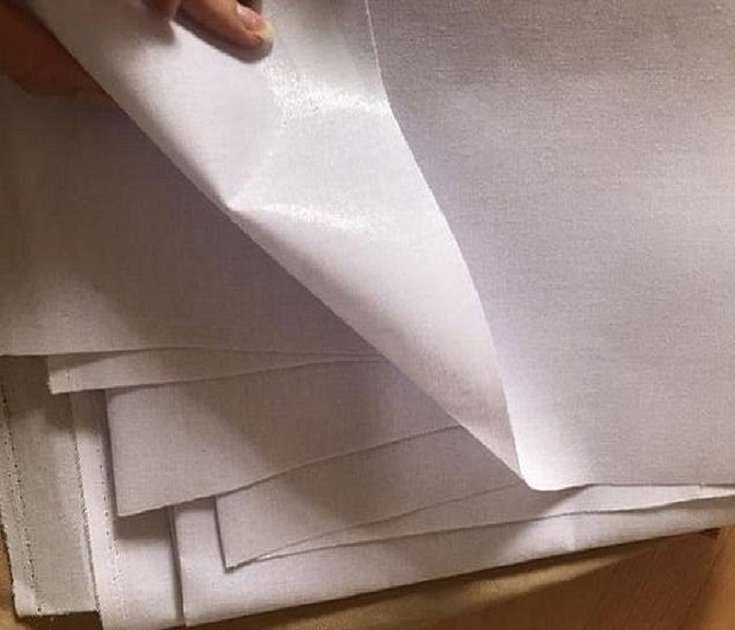
In general, the answer to the question "Dublerin - what is it?" is simple - "dubbing of the main fabric." This is its main purpose. It makes clothes more durable and resistant to negative external factors, ironing and washing, which helps to extend their service life.
What is fabric interlining, what is it for and how does it differ from other types?
Interlining is an adhesive fabric material, but non-woven interlinings can also be used in sewing production. Among them, different types of interlining are quite often used. They are made from fibrous and paper waste or fibers of the second raw material that remain during the weaving process.
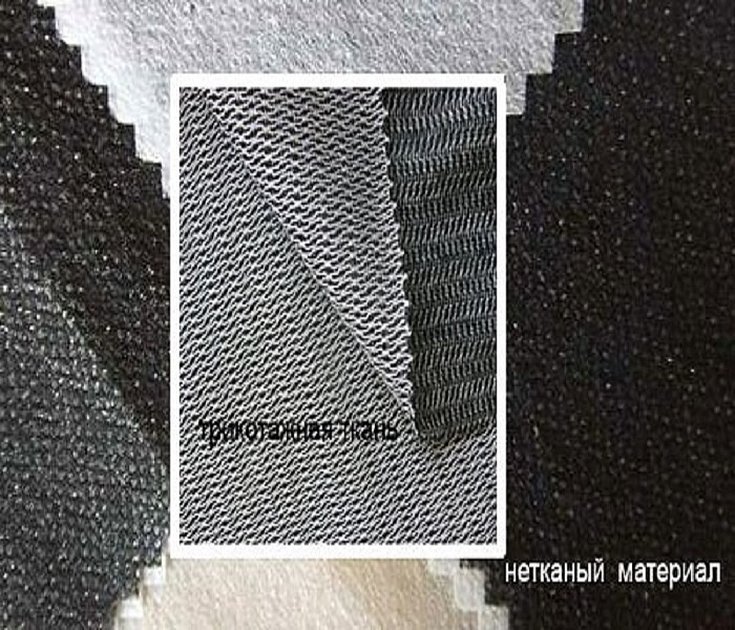
Features that create the difference between gasket materials:
- The interlining has the direction of the warp thread of the fabric. Therefore, when cutting, it is necessary to adhere to the location of the course of the line. The non-woven interlining does not have a shared section.
- Adhesive interlining is elastic, stretches well and drapes. Thanks to these qualities, the cutting and gluing processes are simplified. Flizelin stretches much worse, but its edges do not crumble when cutting.
But the most important distinguishing feature is that non-woven fabric has a number of limitations in use, while interlining can be used as a dubbing for all types of fabric.
Types of material
The strength of the interlining depends not only on the volume of the applied adhesive layer and its correct use, but also on the material it is made of.

In sewing practice, there are two main types of fabric interlinings:
- On a knitted base. This material is made of viscose or polyester. It is more voluminous and dense, but at the same time stretches along the weft thread.
- Fabric-based. This type is similar in structure to a plaster. It is based on a dense material that does not stretch.
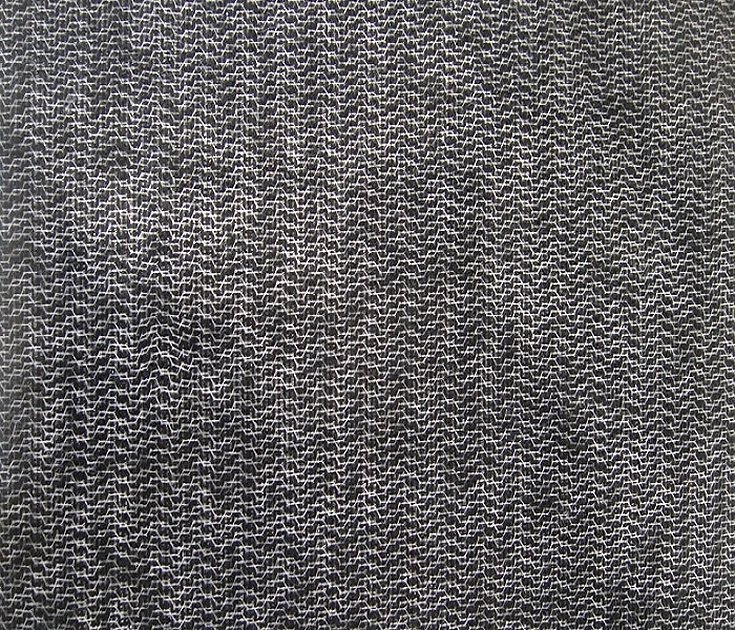
In addition, there are little-known types of interlining. Among them: chiffon, pile, corset, collar and monoelastic.
Important! All adhesive interlinings remain on clothing forever. The exception is some types that are used for embroidery. They perform an auxiliary function that facilitates the embroidery process.

But many are often interested in the question of what kind of interlining there is for machine embroidery. Water- and heat-soluble materials have been developed for this handicraft.
How to choose a dublerin
How to use interlining, avoiding typical mistakes? First, you need to choose the right type of material. It should match the structure of the product being used. To determine this, it is recommended to decatize the fabric lining together with the clothing.
This is done quite simply:
- The lining material and a piece of fabric similar to the item are placed in water at room temperature for several hours.
- Then they are taken out and dried naturally without squeezing.
Please note! These actions are aimed at determining whether the interlining shrinks after washing.
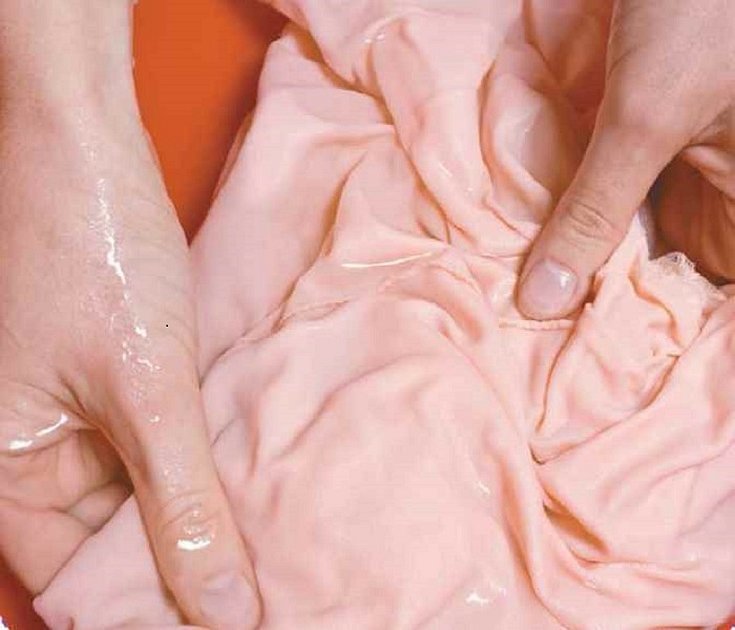
If the volume decreases, you will need to select a different type of fabric material, otherwise wrinkles will appear on the clothes.
How to use adhesive interlining
The interlining material has a wide range of uses. It can provide lightness, density, wear resistance and the desired shapes to products. However, when choosing a fabric base, it is important to consider its intended purpose.
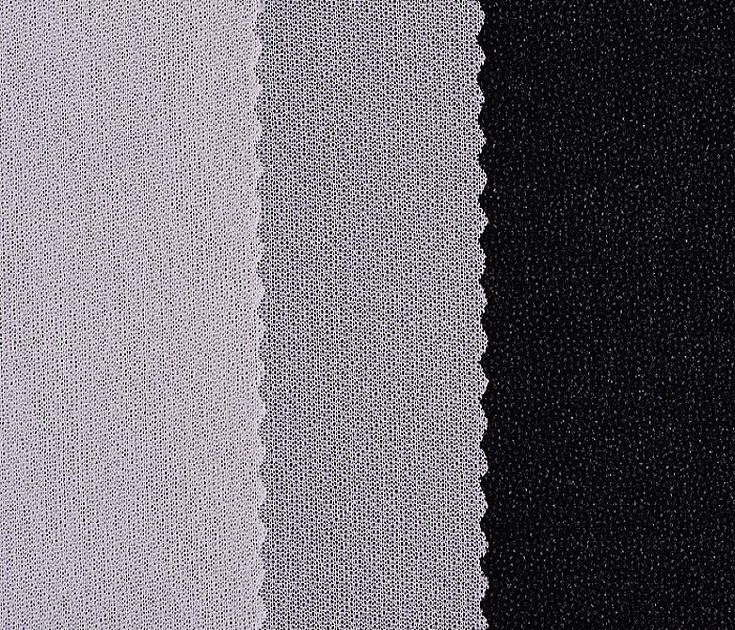
How to use adhesive interlining is described in the table below:
| A type of dublerin | Application |
| fabric based | hats, leather goods, shoes, fur, bags |
| knitted pile | outerwear, jackets, suits, toys |
| elastic | women's dresses, trousers, blouses, skirts, shirts |
| corset | curtains, lambrequins |
| collar | clothing parts, children's books made of felt |
How interlining is attached to the base fabric
The process of gluing the lining material to the main fabric consists of several stages.
Preparing equipment
Before gluing the interlining, you first need to prepare for the event.

For gluing you will need:
- portable ironing accessory;
- iron;
- translucent paper;
- scissors;
- pins.
You will also need the product itself and a piece of lining material for sewing.
Gluing parts together
Once all the necessary materials, equipment and patterns of parts have been prepared, you can begin the work.

Step-by-step instructions on how to glue interlining to fabric with an iron:
- The main fabric is placed and straightened on the ironing board with the wrong side up.
- A fabric lining is applied to the top of the product with the glued surface facing down.
- To avoid displacement, the materials involved are connected to each other with pins.
- After turning off the steam option, heat the iron to the maximum temperature.
- Cover the surface of the items to be glued with translucent paper.
- Press the materials involved firmly with an iron for a few seconds.
Important! Finally, you need to wait for the products to cool down.
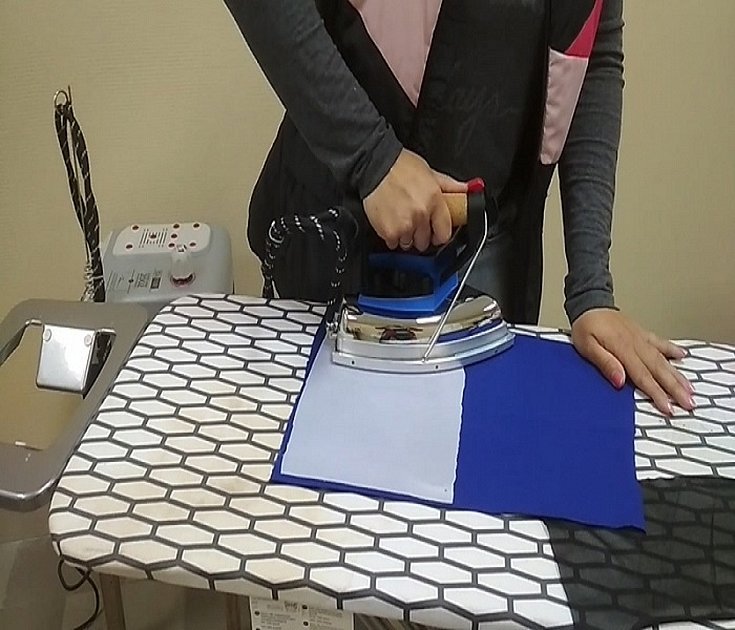
Finally, it is recommended to check the clutch. If a hole is found, all manipulations should be repeated.
Please note! While pressing, the iron must not be moved. It must remain stationary.
How to care for items with interlining
In order for items with interlining fabric to retain their shape and appearance for as long as possible during use, they need to be given special care.
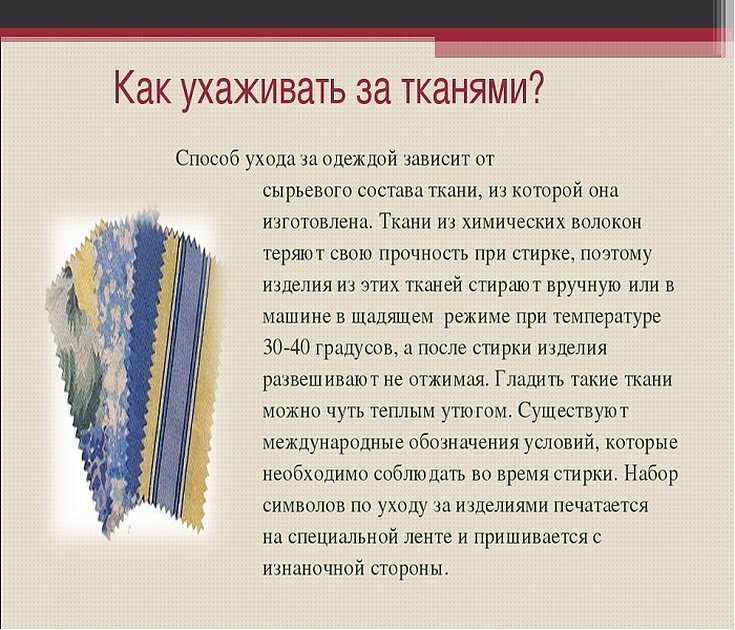
Expert advice:
- When washing the main product, you must follow the recommendations indicated on the label;
- spinning should be done in the “For delicate items” mode;
- during re-gluing, the peeled interlining must be carefully cleaned and carefully straightened;
- The corset fabric lining cannot be washed, it can only be brushed;
- To make the interlining edge less noticeable on a transparent product, its edge should be cut in a zigzag pattern.
Please note! It is recommended to dry delicate items with adhesive pads only on a flat surface, without creases or folds in the material.
Advantages and disadvantages of dublerin
Dublerin has a fairly high price compared to other types of texture. Its cost depends on the material of manufacture, color, size and type of adhesive base.
But despite this, it has such positive qualities as:
- ease of gluing;
- the ability to withstand negative factors when wearing clothes frequently;
- a wide range of types, which allows you to select the lining fabric for the required material;
- no shedding;
- use for fur and knitwear.
Please note! Also, interlining, unlike non-woven textures, is not subject to damage after the weathering of its constituent elements.
As sewing practice has shown, interlining has practically no disadvantages. If all the rules of use are observed, the woven lining material retains its positive properties for a long time. The only disadvantage that seamstresses call the high price compared to non-woven textures. However, given the fact that interlining is made of natural environmentally friendly fibers, its cost justifies itself.
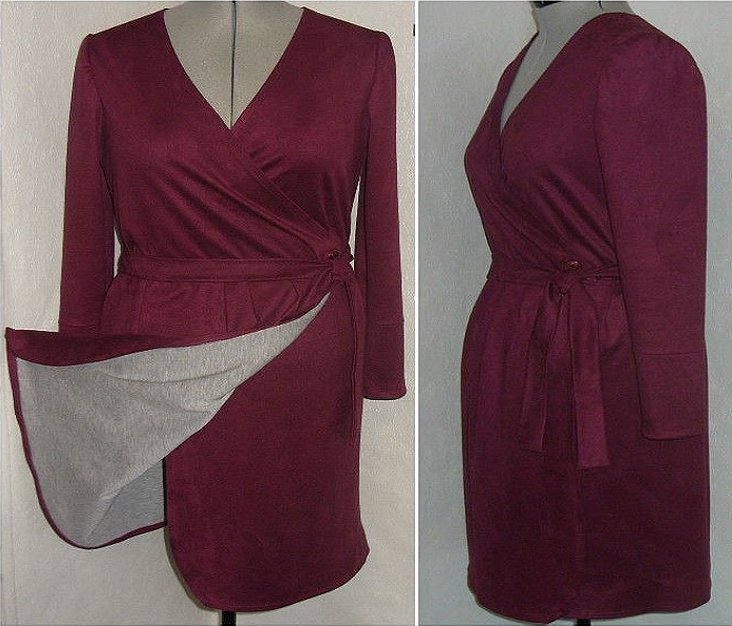
Having considered interlining (what it is, its types and characteristics), even a beginner in sewing will find options where to use it. This can be the production of clothes, bags, hats and much more. But do not forget that the quality of the material directly depends on the correctly selected type and compliance with the step-by-step gluing guide.




